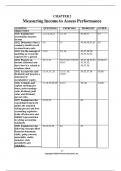Exam (elaborations)
Solution Manual for Introduction to Financial Accounting 12th Edition Horngren Sundem Elliott Philbrick 2024,2025
- Course
- Medicine
- Institution
- Albany Medical College
Solution Manual for Introduction to Financial Accounting 12th Edition Horngren Sundem Elliott Philbrick 2024,2025
[Show more]



